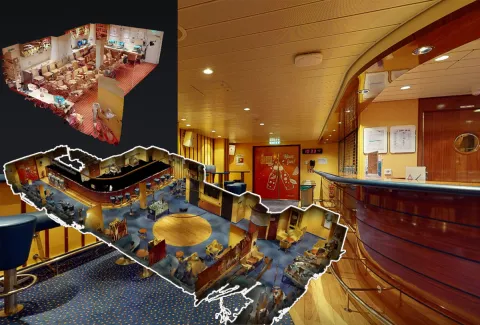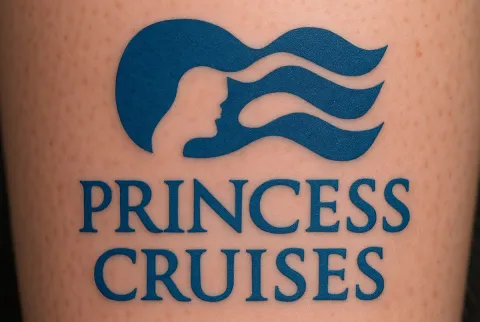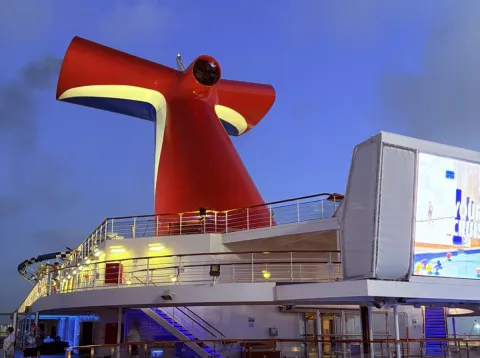
Where do cruise ships dock at the Port of Barcelona, Spain?
The Port of Barcelona (aka Port de Barcelona) is among the largest cruise ports by volume in Europe and a Mediterranean turnaround base for all major cruise lines. Cruise ships berth at one of the 7 international passenger terminals. Terminals A, B, C, D lie at Moll Adossat, and have excellent infrastructure and facilities, catering the needs to cruise passengers. It’s a 20-minute walk from the terminals to the city center, however, due to the summer heat is advisable to take a shuttle bus or taxi. One of the best docking areas is Terminal Sud Barcelona, located next to the World Trade Center and Torre de Jaume I, just 5 minutes’ walk away from the city center. This terminal has the capacity to accommodate 3 small or medium sized cruise vessels which are called North, South and East terminals. Port of Barcelona Address: Moll Adossat, 1, 08039 Barcelona, Spain
Cruise Port Barcelona map with sightseeing attractions
The map of Port of Barcelona presented bellow shows cruise ships docking quays together with the shuttle bus drop-off points. If you are visiting Barcelona this map is of great help pinpointing city’s most visited tourist places.
Sightseeing in Barcelona for cruise ship visitors.
Christopher Columbus Monument
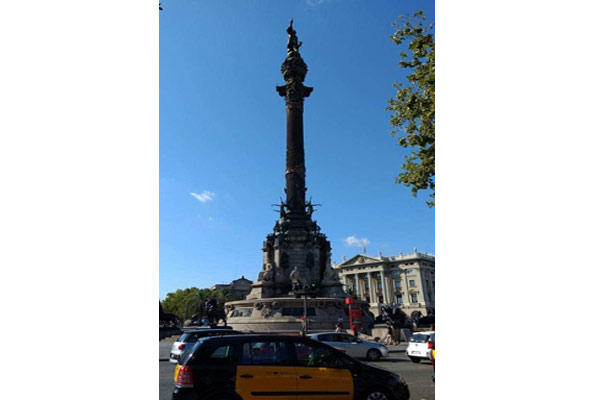
This historic monument is situated at the start of Las Ramblas, close to the cruise ships terminals. There is an elevator which takes you at the top of the monument from where you can enjoy the view of the entire city from the top. You can’t miss this landmark as it stands out as you walk from the cruise port to the city center. Here is located the drop-off point for the shuttle buses. This is a starting point for cruise ship visitors as they can walk up north to the Las Ramblas, visit Barcelona Aquarium which is 10 minutes walking distance or do some shopping at Maremagnum Shopping Mall.
L'Aquarium de Barcelona
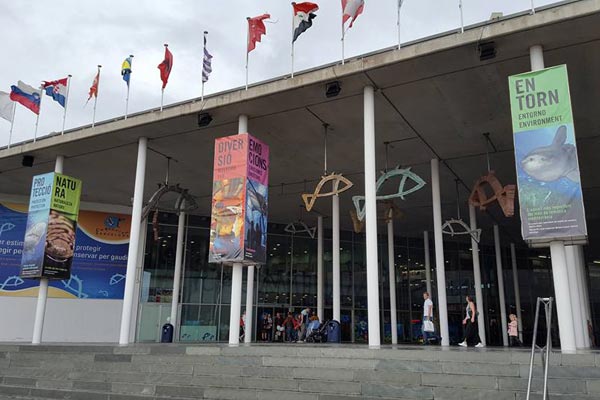
Located near the cruise port L’Aquàrium de Barcelona is one of the most fascinating attractions in Barcelona. This is Europe’s only Oceanarium with 14 different themed aquariums, from the Mediterranean to the Tropical Coral Reef. You can see over 450 different species, walk through an underwater tunnel and see live feedings. L'Aquarium de Barcelona has the largest Mediterranean-themed aquarium in the world, with the star species, such as giltheads, moray eels, ocean sunfish, rays and the sand tiger shark and the sandbar shark.
FC Barcelona Stadium Camp Nou
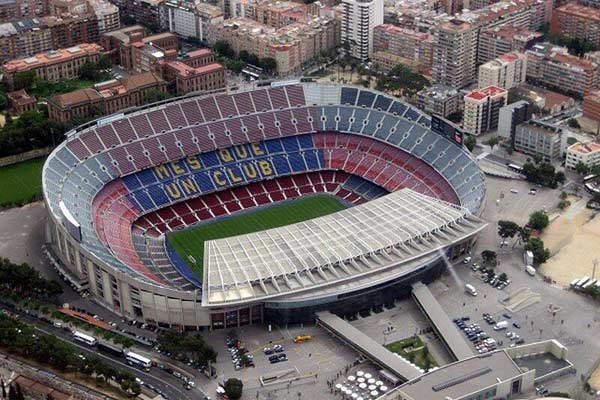
If you are a big soccer fan the legendary FC Barcelona Stadium is a must-do tour. Camp Nou is the largest football stadium in all of Europe, this unique Experience gives you the chance to walk through the most iconic areas of the stadium for an exclusive look behind-the-scenes. You will have a chance to visit FC Barcelona Museum displaying clubs rich history with all the trophies including the ones from the Champions League. Walk down the player's tunnel and get in feeling as you retrace your idol’s steps down onto the playing field. You can also see the visitor’s changing rooms and experience their nerves as they prepare before heading out to play at the famous Camp Nou. You will also have access to the pressroom where the teams sit to debrief post match results and a look at the famous field. There is also a fan shop where you can purchase FC Barcelona memorabilia.
La Rambla
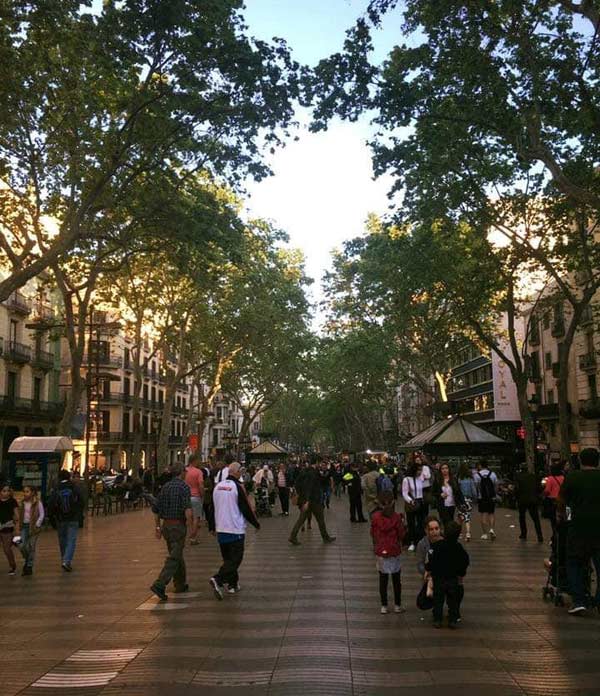
La Rambla or Las Ramblas is a famous, lively and popular pedestrian street in the center of Barcelona. It's a 1200 meters long and divided into five sections. If you are visiting Barcelona with a cruise ship Christopher Columbus Monument is your starting point for exploring this promenade street reflecting the spirit and energy of Barcelona. You will find lots of restaurants and shops, including the famous Market. It's always busy though, so watch your belongings, pickpockets are known to be here.
Barcelona Gothic Quarter
The Gothic Quarter is the oldest part of the City. This is mainly a pedestrian area with buildings dating from the 13th century which create a truly medieval atmosphere. There is a lot to do and to see in this bustling neighborhood. No matter how much you explore this historic place, you will always stumble upon the new enchanting square or mysterious alleyway. Here you can learn about Barcelona’s Jewish past, explore Picasso’s Old Stomping Grounds, or see Gaudi’s very first project.
The Catedral de la Santa Creu i Santa Eulàlia

Built over six centuries The Catedral de la Santa Creu i Santa Eulàlia reflects the different generations who have left their mark of architectural styles in this predominantly Gothic building which needs to be viewed inside in order to fully understand its splendor. The Cathedral was named after the 13-year-old martyr, whose sarcophagus can be seen, carved in bas-relief, depicting her torture and execution.
The building was funded by donations from the medieval brotherhoods and guilds. The main façade and bell tower were completed in 1890, following the original plans, in the neo-Gothic style. The interior is an impressive sight with 25 side chapels, where the Knights of the Golden Fleece gathered during the visit of Emperor Charles V of Germany in 1517.
La Sagrada Familia

The most iconic landmark, La Sagrada Familia on Calle de Cerdena is one of Gaudí most famous works. The Cathedral, begun in 1882 is still under construction although Gaudí died in 1926. Gaudí is buried in the crypt. It is possible to take an elevator to the top of one of the towers for a panoramic view.
The Barcelona Zoo

Located in the Parc de la Cuitadella, Barcelona Zoo is ranked among the top zoos in Europe. The Zoo is also one of the oldest and most modern zoos in the world. Founded in 1892, the enclosures at the Barcelona Zoo are of open construction. Here you can discover more than 300 species of animals including albino gorilla, the felines, reptiles, tropical birds, and enjoy the educational sea lion sessions.
Picasso Museum
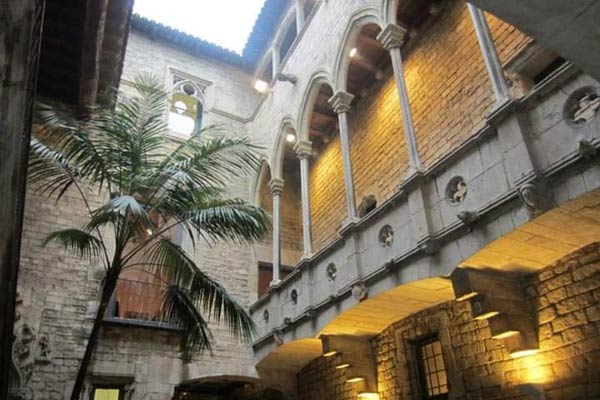
Located on Carrer de Montcada, several adjoining 15th-century palaces house the most extensive collections of artworks by the 20th-century Spanish artist Pablo Picasso. Over 4,000 exhibits of Picasso’s earlier works, as well as paintings done later in his lifetime, are on the display. The museum has one of the most complete permanent collections of Picasso works.
Language:
Spanish is the official language of Spain.
National currency:
Euro is the official currency.





